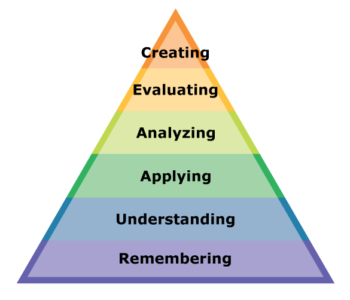What Is Instructional Design?


It’s commonly confused with teaching methods, but instructional design actually occurs many steps before any real teaching takes place.
It can be something as simple as choosing a color palette suitable for your audience, or as complex as incorporating learning and behavioral theory into the very structure of your platform. Either way, it’s all about making sure your users, whatever demographic they may fall into, will get the most out of their eLearning.
What’s interesting here is that instructional design as a discipline is not limited to school learning for children or teenagers. It’s also a crucial component of a lot of business platforms. After all, eLearning—especially in our current time—is for everybody.
In short, instructional design is simply a method of optimizing your eLearning platform’s design to facilitate as much learning as possible, tailored to your user base. This can be achieved via many different strategies, but this article is going to break down the main criteria that should be considered when designing a platform or software. Read on to find out more.
ADDIE Model
This is one of the main models used when considering instructional design. It is comprised of five steps:
- Analysis
- Design
- Development
- Implementation
- Evaluation
Let’s break it down further.
Analysis
This is the practice of investigating your target audience. What demographics are you aiming your platform at? What do they need to get out of learning?
Some components to consider:
- Age
- Gender
- Primary language
- Level of education
- Any special accommodations
- Profession/desired field
- Culture
This step takes place before anything else because to create a useful and productive design, you need to ask yourself what your audience needs, and use that information to decide whom you’re aiming your product at.
What goals are they trying to achieve? How can your platform help them get there?
The analysis also involves surveying the current market and seeing what niche your platform could fill. It’s important to do something different and unique, so people will want to use your site over others.


You’ll need to take a different approach when you teach adults. Instead of aiming to teach them completely new things, you want to expand what they already know about something. This means taking a different approach to the analysis you do and coming up with innovative solutions on a much more complex level.
Say you’re aiming to design office productivity software. Your initial analysis would investigate current issues that people are facing with keeping their focus over a standard workday. Perhaps it would also involve checking current statistics or even interviewing a sample of remote-work employees. You can use direct mail for this if you already know who you’re going to interview.
Whatever the method you choose to use, remember that it’s all about deciding on a target market, then getting to know them so you can make well-informed design choices.
Design


But how do you go about making a good design? As always, there are several factors that must be considered.
Now you’ve pinned down your target audience, you’ll have to think about what your objectives and goals for them are.
- What are you aiming for them to learn?
- How will they get there?
- How long will it take?
- How can you help them achieve their learning goals?
You’ll need to write out specific, actionable objectives. That’s the keyword here: your learners have to realistically be able to meet the aims you set out for them.
Here’s a handy checklist of things you need to implement at this stage:
- Learning objectives
- Assessment tasks
- Exercises
- Content/subject matter
- Lesson/module planning
- Advertising
- Delivery methods
Development
Once you’ve analyzed and designed everything, it’s time to develop your platform.
First, it might be a good idea to choose an affordable website hosting software, so you can build your platform as you go.
Then, it’s time for a video conferencing session with your team. Several important decisions must be made at this stage. Who’s going to write your content? Who will source images and multimedia?
You’ll also need to get someone to devise assessments, so you can keep track of how much your students are learning and how well they’re doing.
Slack is perhaps the most common platform on which to do this, but there are several alternatives to Slack that exist out there as well. Have a look at all of them and decide which one will work best for your team.
Once you’ve done the bulk of the development work, sit down again with your team and go over everything. You can do this in a larger group with everybody, or you can split it by department—whatever works for you.
Implementation


Now, don’t expect everything to go perfectly right away. There will be bugs or parts that are underdeveloped. The aim here is not to get it spot-on from the start, but rather to see it as a process that continually evolves as you gain experience and insight.
It’s important to keep an eye on things like teacher-student communication. This is not just in the traditional classroom setting, but for business platforms as well. There will always be a teacher and a student, and optimizing the way they are able to interact with each other is crucial.
Remember, this is just about fine-tuning. Listen to the feedback that the team and the users are giving you, which brings us to the final letter of the acronym.
Evaluation
This step, originally listed as a separate final stage, is now thought of as a continuous process that should be applied at every juncture. This is because business owners have realized the benefits of using customer feedback at every stage of the instructional design process.
Because of this, this step is arguably the most valuable in the whole procedure. After all, you cannot expect to improve your platform without practical feedback from your users, and receiving it at every turn will help you maneuver your platform to the top of the ratings.
However, it’s not just users you’ll require feedback from. It’s important to liaise with your team at this stage as well, to check how they feel the process went and anything they’d do differently next time. Again, you can do this as a cohort or in smaller groups. After all, there are certainly enough video meeting apps out there to go around!
This is a good chance for them to raise any concerns they might have about the running of the platform, and a good chance for you to demonstrate your leadership skills.
So, What Are the Benefits?
Now that we’ve taken you through the most widely used instructional design model, you might be wondering what the point of it all is. After all, don’t you know your own company best?
Of course you do, but what we’re trying to say here is that using models like these can bring order to what is usually a very chaotic time for businesses. Creating a platform is hugely complex, so the ADDIE model and all the other tools are simply there to assist you.
Here are some of the benefits of good instructional design:
-
Increased Knowledge Retention
Having good instructional design means that anything your platform teaches is more likely to be retained by your users. Studies do show evidence that visual learning aids, such as images, videos, or infographics can hugely benefit people’s learning. Therefore, instructional designs that incorporate these elements into the design phase will likely see positive results.
-
Increased User Engagement
This point follows much the same vein as the first. A good instructional design will increase user engagement, for the simple reason that people will enjoy visiting your platform. People are more likely to return over and over if they find that they are learning a lot and having a good time while doing it.
-
Improved Likelihood of Goal Achievement
This step is a natural progression. Think about it: If people are more likely to positively engage and retain what they learn, it follows that they will be more likely to achieve their learning goals.
Good instructional design makes sure to hit all three points, as well as ensuring good communication between teacher and student, a smooth user experience, and top-quality resource availability. If that list wasn’t enough to convince you, try it and see the results for yourself!
Check out Infobase’s Instructional Strategies Toolkit for more ideas that will help you and your students thrive.
See also:



